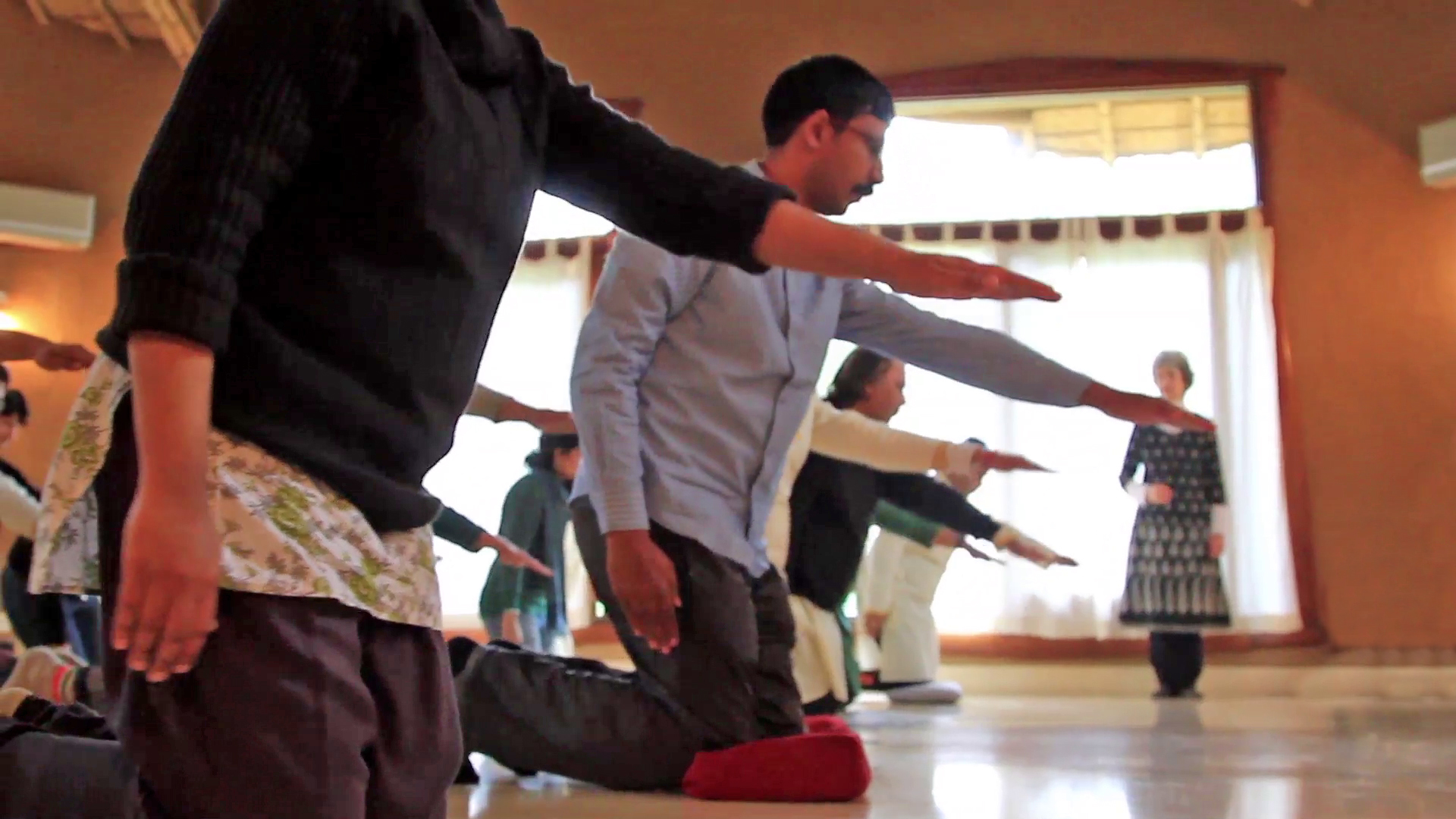“At the moment of a particular movement we no longer think of the movement past or the movement to come. We are not trying to express the form of a movement, an attitude that we make ourselves assume. We are entirely attentive to an energy that needs to be free to remain contained in the body in a certain way. One can know it only in subjecting oneself to it. … The Movements can show us how to be in life, how to experience Presence… Through the Movements, when all the energies are related, a new energy is produced. We can feel it. It has another quality, another force, and a consciousness that ordinarily we do not have.”
The Reality of Being (pg. 123)
The Movements are not just exercises or dances. Those who ‘bring’ the movements to others in a group have a grave responsibility as “We have to be very careful in changing the Movements, particularly the order of attitudes that expresses a law. Each attitude, each gesture, has its place, its length, its proper weight. If there is a mistake or if something new is introduced, the whole meaning can be distorted.”
The Reality of Being (pg. 126)
Movements are a call to a relationship with higher modes of being. This can be through a call to inward focused silent movements or through strongly affirming external postures. At these moments, it may be possible to witness the relationship between the automatism and a more essential aspect of oneself.
“There are two categories of Movements and they proceed in opposite ways. In quiet Movements, one can be related with a higher world and one sees one’s remoteness from it; and one has remorse. In these Movements, one has been freed from the usual worldly movements, and the music and the slow gestures all help one relate with the higher world, and one is quiet and receptive. The stronger Movements do the same by affirmation. I affirm myself, but only because I am related with a higher energy.”
Madame de Dampierre, as quoted in Heart Without Measure (pg. 49)




